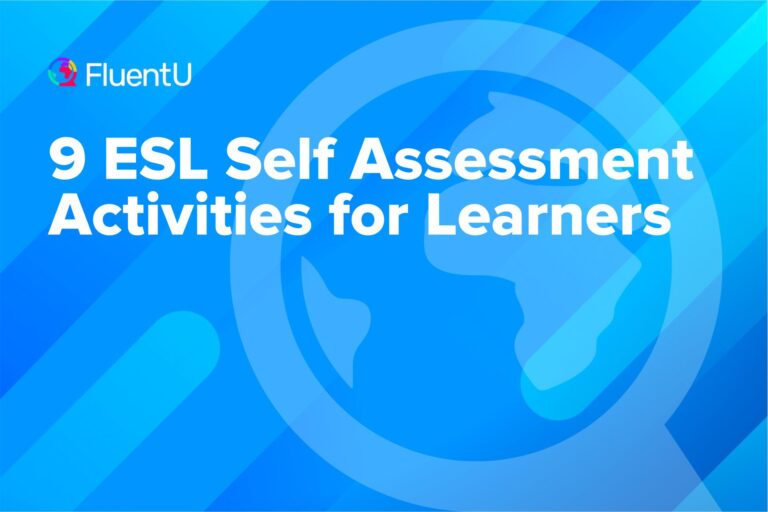50+ ESL Writing Prompts

Prompts are excellent for countering the dreaded blank page during writing exercises, which many ESL students find not only intimidating but also immobilizing. After all, they’re working in a second language that might not even share the same writing system as their own.
Let’s have a look at more than 50 different writing prompts and how you can use them to give students a boost in the right direction. The guide also includes top resources to find more great writing prompts.
Download: This blog post is available as a convenient and portable PDF that you can take anywhere. Click here to get a copy. (Download)
Process Writing

Process writing is a good place to start with your beginner students.
Simple process writing can be nothing more than a numbered list of steps written in the simple present with imperative grammar.
You can also use these prompts for intermediate and advanced students by asking them to write full paragraphs using smooth transitions.
Process Writing Prompts
- What’s your favorite food from your home country? How do you make it?
- How did you travel from your home country to the U.S.?
- What’s the best way to study for an exam?
- How does a person learn to read? What are the necessary steps?
- What’s something you’re good at? How did you learn to do it?
- How do you get ready every morning? Discuss each step of your morning routine.
- How does a person get a job? What steps must they take?
- How do you get a driver’s license? What steps must you follow?
- How does an acorn grow into a tree? What are the stages of its life?
- What are the stages of the water cycle?
How to set your students up for success
When brainstorming ideas, ask your students to list the steps of how they came up with the content to write about. If you want to challenge intermediate and advanced students, have them write paragraphs describing the brainstorming process rather than writing a numbered list.
For certain topics, students may need time for additional research, like when writing about science.
Also, be aware of any vocabulary that may be specific to the process students are describing. For example, if they’re describing a food from their home country, students may need to define a particular ingredient (e.g. kimchi, herbs de provence) that may not have a good English equivalent.
Opinion Writing

Opinions are everywhere. From social media posts to commentary on news programs, we’re constantly exposed to other opinions and ideas. For this reason, it’s important for students to be able to both express their own opinions and evaluate the opinions of others.
And what better way to express one’s opinions than with a written argument? Here are some prompts to help your students vocalize their opinions.
Opinion Writing Prompts
- Should people under the age of 21 be allowed to drink alcohol? Please explain.
- Should college students be allowed to choose their own courses or study from a set list of required courses? Please explain.
- Is it better for young adults to live at home with their parents or to live on their own? Please explain.
- Should your country require young adults to serve in the military? Why or why not?
- Should professional athletes be allowed to compete in the Olympics? Why or why not?
- Should people be allowed to smoke in restaurants? Please explain your opinion.
- Should parents be allowed to arrange marriages for their children? Why or why not?
- Should students be required to take physical education? Why or why not?
- Should teenagers be allowed to make decisions about their sexual health without the consent of their parents? Please explain your opinion.
- Should students be required to clean their schools? Please explain.
How to set your students up for success
Before starting the assignment, review modal verbs with your class. Explain to your students that the verb, “should,” is a signal word for opinion writing and is commonly used when expressing one’s thoughts, opinions and ideas.
Graphic organizers are a great way to help students think through what they believe about a given topic and get those thoughts in the right order for writing. Curriculum developer, Scholastic, has some great organizers you can print and give to your students to help them gather their thoughts before they write.
Good opinion writing takes both sides of an argument into consideration. While students should devote the majority of their essay to supporting the facts they agree with, they also need to dedicate a section to addressing the opposition’s argument and explaining why it’s wrong. This is called the rebuttal and should come just before the conclusion in an opinion piece.
Narrative Writing

Narrative writing tells a story.
It has a beginning, a middle and an end, and aims to engross the reader and make them feel as if they’re experiencing the story firsthand. Moreover, narrative writing covers a sequence of events, telling the reader how these events relate to one another.
Narrative Writing Prompts
- Think about a time in your life when you were disappointed. What caused this, and how did you get over it?
- Did you have a pet as a child? If so, tell the story of how you got it.
- Who’s your hero? What did they do to gain your respect and admiration?
- What was an important event in your childhood? Write about what happened and how it has affected you.
- Tell about a time you were embarrassed.
- How did you meet your significant other? Tell the story of that first meeting. (For younger students, you can ask the question, “How did your parents meet each other?”)
- When did you first think about traveling overseas to study English?
- What would the perfect day look like? Discuss how you would spend it from when you woke until you went to sleep. (Note: Your students need to use the conditional form for this narrative. Take time to review it with them before assigning this prompt.)
- Describe the life of a dollar bill, from when it comes off the printing press until it retires.
- Describe the life of someone famous in your culture. Where did they come from? How did they become famous?
How to set your students up for success
Absolutely essential for narrative writing, transitions ensure the sequence of events flows smoothly. Before beginning the writing exercise, take a few minutes to review transition words and phrases with your students. You can even give them a copy of this list to help them get started.
Another important part of narrative writing is action words. Great for boosting the imagination, action words help the reader visualize the story while reading. Encourage your students to add extra color to their stories by having them brainstorm a list of action words at the beginning of the lesson.
Lastly, make sure that your students use proper verb tenses throughout their writing. Regardless of whether the story is being told in past or present tense, students must learn to keep the verb tense is consistent throughout the story without switching from past to present, or vice versa, unless talking about two different points in time.
Descriptive Writing

Descriptive writing is all about writing the details, and mixing them in with sensory words and literary devices. While there’s definitely a stylistic component to descriptive writing, anyone with a good-sized vocabulary and a little bit of practice can write a vivid story.
Descriptive Writing Prompts
- Go to a coffee shop or restaurant and watch the people. Describe what you see.
- Write a travel brochure for your favorite vacation spot. Describe in detail why others should visit this location.
- Describe a classroom in your home country. How’s it different from our classroom?
- Think about a time you were scared. Describe where you were and what frightened you.
- Think of a scene in your favorite movie. Describe what happened without referencing characters in the movie.
- What’s something that is very valuable to you? Describe that object.
- Close your eyes. Tune in to what you can hear, smell and feel. Now open your eyes and write about what you observed.
- (First, have your students close their eyes, then play them a clip from a movie scene) What did you picture as you listened to the scene?
- Describe your favorite Halloween candy, making note of how it tastes and smells.
- Describe your dream car.
How to set your students up for success
The best way to help your students master descriptive writing is to get them accustomed to using sensory words—the words that describe how something looks, sounds, smells, feels and tastes.
If your students are describing a person, have them start at their head and move down to their feet, or vice versa. If they’re describing a room, have them start at the door and work their way around the room clockwise. That way, their descriptions are organized and structured, making it easier for the reader to form a clear picture of the imagery in their mind as they read.
Creative Writing
Everyone loves a good story, but not all people feel confident writing one of their own.
With a solid setting, character and conflict, anyone can come up with a gripping and exciting story—even your students.
Here are some writing prompts to get your students expressing themselves with stories.
Creative Writing Prompts
- A young boy sees what appears to be a UFO land outside his home late one Tuesday night. What happens next?
- Use the following scene for inspiration: The boat rocks as each towering wave tosses it into the air and then lets it plunge. You hang over the edge of the boat waiting for the current wave of nausea to pass. Suddenly you hear at least a dozen sets of boots running along the deck…
- The year is 1880, and a young girl whose bonnet hangs down her back from its strings sighs in relief. She’s in a ghost town. How did she get there? Tell the story of her past.
- This morning is just like any other school morning, except one thing: No one else is at school. The doors are opened and unlocked, but you’re completely alone. Write the story of what happened.
- Start a story with the following phrase: It was the worst mistake he’d ever made.
- Use the following scene for inspiration: She’d never seen an animal like this before, but it seems to be friendly. Just then a news alert comes over the radio…
- Start a story with the following phrase: He could see eyes in the shadows.
- Use the following scene as inspiration: They said I was free to leave, but sitting in a helicopter with the city beneath me, where could I really go?
- Choose a favorite character from a book or movie. Then put this character in a setting from a different movie or book—for example, Harry Potter finds himself on the Millennium Falcon with Chewbacca. Then, tell the story of what happens next.
- Have each person in class write down a setting, one character and one object on three separate slips of paper. Collect each category separately, shuffle them and redistribute the papers to your students. Each person must write a story incorporating the setting, character and object they received.
How to set your students up for success
For a story to be successful, it needs three important elements: setting, character and conflict.
Take a few moments to talk about each of these elements with your students before they begin the activity. Have them think about these elements and how they’ll be presented in their own stories by asking the following questions:
- Where will the story take place?
- Who’s the main character of the story?
- What conflict will that person face?
- How will they overcome what is stopping them?
Once they can answer these essential questions, they’re ready to begin writing.
If you’re teaching beginner or intermediate students, separate the language from the story elements by having them write a story they already know. They can write a story of their favorite movie, rather than come up with a plot of their own.
Also, if your students are struggling to come up with their own stories, use comic books for inspiration. Writing comics is also a great way to give students writing practice without requiring imagination to go along with it.
Resources for Finding More Inspiring ESL Writing Prompts

Writer’s Digest
The Writer’s Digest website and magazine is full of tips and tricks for writing, interviews with authors, and insight into what it’s like to be in the writing business. The prompts section contains mostly fiction and creative writing prompts, and is updated every week with a new prompt.
Reddit is a huge community of people who love to share things they find around the Internet, and have conversations. The Writing Prompts section has some really creative ideas, and you can even see what other people have written in the comments.
Tumblr
Tumblr is a great place to find ideas. It’s a place where people can blog about whatever they want, but it’s more visual than most other blogs. (That means it focuses more on pictures.) The “Writing Prompts” Tumblr uses pictures to share prompts, both creative and nonfiction. There’s even one prompt for a song!
Lindsay Ann Learning
The prompts on this website are meant for school children, but they are excellent writing starters for any age. The page focuses on journal writing, so these prompts are mostly for nonfiction writing.
Language Is a Virus
The Writing Prompts Generator on this site has a huge number of ideas for fiction and nonfiction writing, which you can see one at a time. This website also has some fun word games to get you thinking and being creative.
Creative Writing Prompts
This website has over 300 prompts for you to try. Just reading through the prompts will give you some new words to learn! Most of these prompts are for creative writing, but there are a small number of nonfiction thoughts in there too.
Writing Forward
This list of creative writing prompts has 25 story starters. Just pick a first sentence and see where the story takes you! There are also some questions and ideas to explore. When you’re done here, head over to the Grammar section for some tips from the pros.
Writing Prompts by 21×20 Media
Want to get your prompts in a phone-friendly format? Try the Writing Prompts app from 21×20 Media. It’s not free, but at just $1.99 you get hundreds of prompts organized by type. Look through pictures, place and character ideas, and much, much more.
Wrighting Words
You’ll find almost 500 creative writing prompts on Wrighting Words. The long list has everything from interesting story starters to fun with vocabulary words. There are even some titles and dialogue ideas. You’re sure to find something to inspire you here.
Pinterest has many great collections of writing ideas and exercises. You can really browse the entire website for ideas and inspiration. For some more focused writing, check out the Writing Picture Prompts board linked to above, which has nearly 400 picture prompts meant to inspire you.
Think Written
How about a prompt for each day of the year? Think Written has that. The list here focuses on words and themes, so you can write fiction or nonfiction—it’s up to you. For a real challenge, try following the list, doing one prompt every day. How far down the list can you make it?
Visual Prompts
If you prefer to see your prompts and not just read them, you will love the Visual Prompts website. Each prompt is written over a picture that can help you imagine what you’re writing about. There’s also a nice mix of creative and nonfiction prompts here.
The Write Prompts
The Write Prompts has almost 2,000 prompts, but you might find the word prompts the most useful. Each prompt comes with a list of vocabulary words that you have to use in your story. Can you string the words along and make an interesting story or essay?
Seventh Sanctum
The Seventh Sanctum is a collection of writing generators—websites that create prompts for you. There is a nearly infinite (never-ending) number of possible prompts! You can also try any of the other generators, like the setting (place) one, or the one that asks creative “What if…?” questions. There is so much to play with here!
BuzzFeed
Buzzfeed is mostly known for its funny picture articles, but this article has an excellent list of prompts for all kinds of writing. These prompts can be used in a school, but they can also be used by adults. Some of these will get you feeling creative, and some will make you think. Have fun with both!
The Journal
The Journal is another website for nonfiction and blog writing ideas. There is even more here too—get ideas for writing your opinions about topics, your memoirs (writings about yourself), and free-writing, which is when you don’t stop writing for 10 or 15 minutes.
Education World
Education World is a website for teachers, so these prompts are meant for the classroom. This means that they will make you think, and each prompt has a helpful tip box with some ideas for what you can write on the topic.
These are just some of the ways to get your students thinking about how to fill the page with their thoughts and ideas. A list of writing prompts and a helpful teacher can go a long way in preventing writers’ block and helping students look at every empty page as an opportunity to express themselves.
Download: This blog post is available as a convenient and portable PDF that you can take anywhere. Click here to get a copy. (Download)
And One More Thing...
If you like learning English through movies and online media, you should also check out FluentU. FluentU lets you learn English from popular talk shows, catchy music videos and funny commercials, as you can see here:
The FluentU app and website makes it really easy to watch English videos. There are captions that are interactive. That means you can tap on any word to see an image, definition, and useful examples.
For example, when you tap on the word "searching," you see this:
Learn all the vocabulary in any video with quizzes. Swipe left or right to see more examples for the word you’re learning.

FluentU helps you learn fast with useful questions and multiple examples. Learn more.
The best part? FluentU remembers the vocabulary that you’re learning. It gives you extra practice with difficult words—and reminds you when it’s time to review what you’ve learned. You have a truly personalized experience.
Start using the FluentU website on your computer or tablet or, better yet, download the FluentU app from the iTunes or Google Play store. Click here to take advantage of our current sale! (Expires at the end of this month.)











